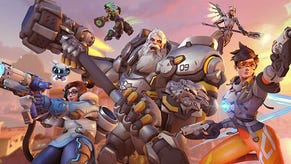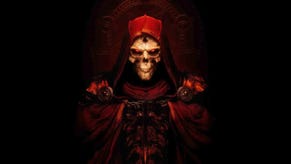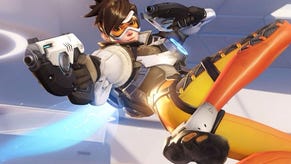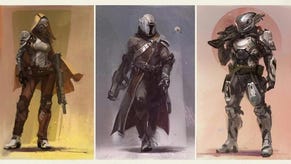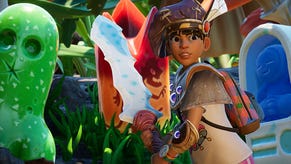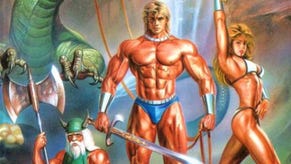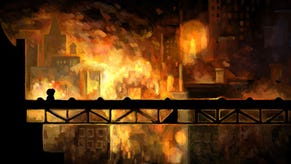Blizzard's Jeff Kaplan traces line from Project Titan to Overwatch
"Tracer had elements of the Jumper…"
Blizzard's been pretty open about the fact that Overwatch, its phenomenally successful multiplayer shooter, rose from the ashes of the cancellation of Project Titan, an ambitious new MMO that was designed to go even further than World of Warcraft.
But we know precious little about what, exactly, of Overwatch was once Project Titan - so it's cool to see development chief Jeff Kaplan reveal a few interesting morsels about the process Blizzard went through.
In a Reddit AMA held overnight, Kaplan answered questions on how Overwatch came to be. Work on Project Titan began around 2007, Kaplan said, and development ran until May 2013.
In 2014 Kotaku's Jason Schreier ran an excellent piece on what Titan actually was - it's worth a read to get more on how that game might have turned out.
Last night Kaplan spoke in general terms about the cancelled MMO, but went deep on one class in particular that fans of Overwatch's Tracer will find instantly familiar.
"Titan was a class-based shooter/MMO and one of the classes was called the Jumper," he said.
"The Jumper wasn't a specific character but rather an avatar (like Warrior in WoW). Most of the concepts of the Jumper were male... we did some female ones as well. The playable version in the game was male.
"Blink, Recall and Pulse bomb were all designed for the Jumper... as well as dual-wielding machine pistols (at the time I was playing tons of CoD: MW2 and my loadout was M16 primary/G18s secondary... the Jumper guns were my G18s).
"But because Titan was an MMO the Jumper started getting tons of progression abilities... you know covering a whole level up system... so the jumper got shotguns, and knockbacks etc... it was very cluttered and confused."
After Project Titan was cancelled, the development team had just six weeks to pitch new game ideas to the studio. If it failed to come up with something that got the green light, the team would end up working on other projects, such as World of Warcraft and Diablo 3.
Blizzard concept artist Arnold Tsang had drawn pictures of a number of characters, and lead designer Geoff Goodman had pitched class ideas for a class-based MMO. Kaplan said the team merged these concepts into what eventually became Overwatch.
While Kaplan stressed that most of the heroes in Overwatch were not in Titan, some did in fact begin life in the cancelled game. And if you haven't guessed already, Titan's Jumper became Overwatch's Tracer.
"When we simplified for OW, we chose only the abilities that worked well together and then created a HERO rather than a class," Kaplan said.
"Tracer had a personality, an origin etc. That's what made her work."
Tracer isn't the only Overwatch hero that's based on a Project Titan class in some way, either.
"Tracer had elements of the Jumper," Kaplan revealed. "Reaper was Reaper (he did have a crossbow at one point in Titan). Widowmaker evolved from a class called the Ranger. Bastion also evolved from the Ranger. Soldier 76 evolved from the Ranger. Symmetra and Torbjorn evolved from the Architect. Reinhardt evolved from the Juggernaut, although he is completely different... just the idea of 'big guy with shield' is all that stuck. Genji/Hanzo evolved from the Assassin."
Here's a cool anecdote about Tracer, perhaps Overwatch's most famous hero:
"The first hero we implemented was Tracer. We did not have any animations or gun models. So she shot laser beams from her eyes."
When Overwatch was announced many compared it to Valve's competitive class-based shooter Team Fortress 2. According to Kaplan, it was a comparison Blizzard was well aware of, and it planned the reveal accordingly.
"When we were planning the announce of OW at Blizzcon 2014, I really pushed the team to have 12 heroes and three maps complete," Kaplan said.
"My reason was that if we had nine or fewer heroes, we would only be compared to TF2 - players and press would map each hero to a TF2 equivalent. But I knew if we had more than nine and we had enough maps for people to really play on and experience the game, they would quickly realise that while there was an obvious inspiration from TF2 in the game, we were clearly something different.
"Also, no hats."
It's cool to learn how Overwatch - a game millions of people play and enjoy - emerged from the cancellation of another Blizzard game. Kaplan's AMA gives us a rare insight into the turbulent reality of video game development, but also shines a light on how projects can be saved.
The rest of Kaplan's AMA is well worth a read.




